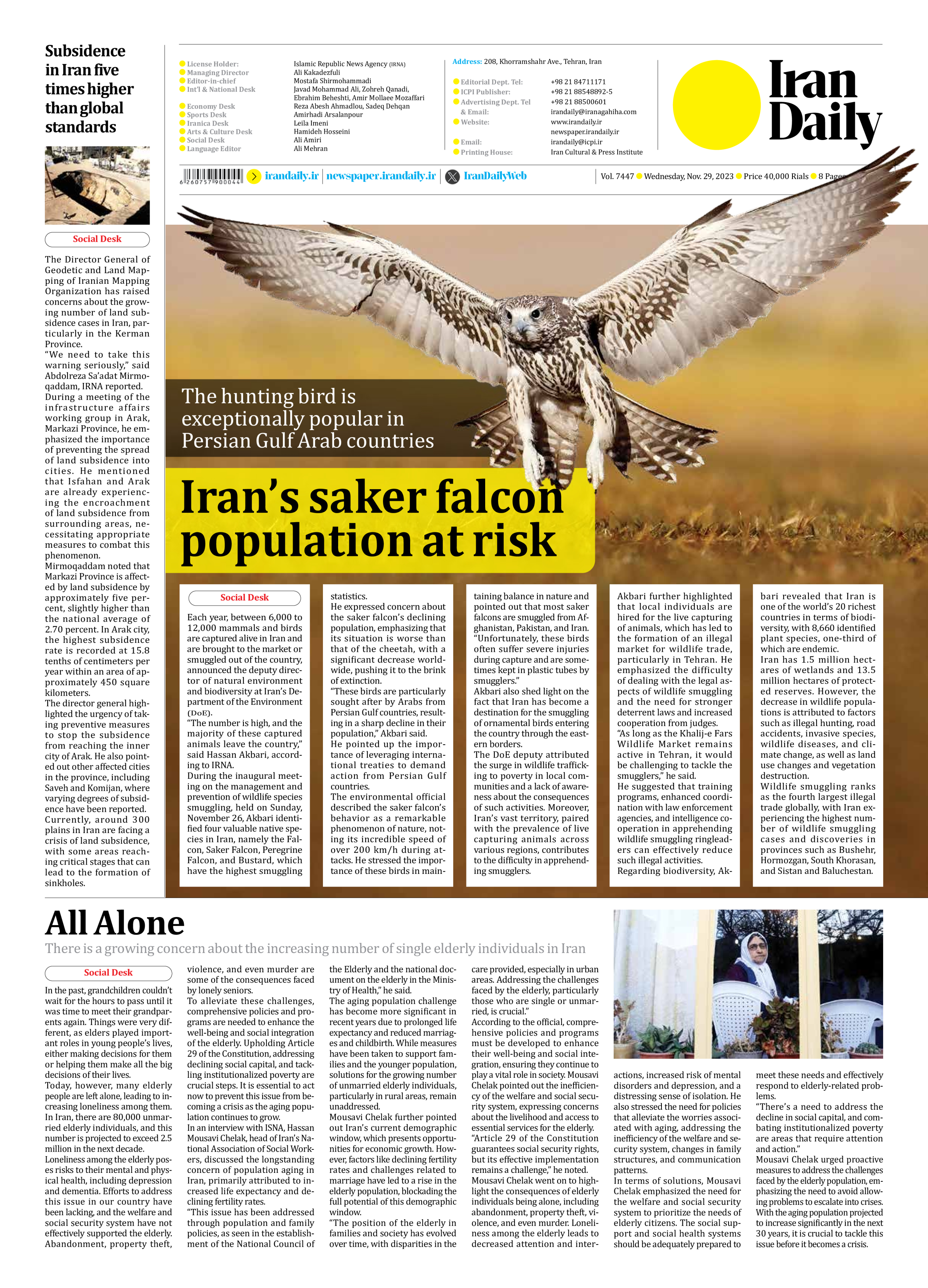
The hunting bird is exceptionally popular in Persian Gulf Arab countries
Iran’s saker falcon population at risk
Each year, between 6,000 to 12,000 mammals and birds are captured alive in Iran and are brought to the market or smuggled out of the country, announced the deputy director of natural environment and biodiversity at Iran’s Department of the Environment (DoE).
“The number is high, and the majority of these captured animals leave the country,” said Hassan Akbari, according to IRNA.
During the inaugural meeting on the management and prevention of wildlife species smuggling, held on Sunday, November 26, Akbari identified four valuable native species in Iran, namely the Falcon, Saker Falcon, Peregrine Falcon, and Bustard, which have the highest smuggling statistics.
He expressed concern about the saker falcon’s declining population, emphasizing that its situation is worse than that of the cheetah, with a significant decrease worldwide, pushing it to the brink of extinction.
“These birds are particularly sought after by Arabs from Persian Gulf countries, resulting in a sharp decline in their population,” Akbari said.
He pointed up the importance of leveraging international treaties to demand action from Persian Gulf countries.
The environmental official described the saker falcon’s behavior as a remarkable phenomenon of nature, noting its incredible speed of over 200 km/h during attacks. He stressed the importance of these birds in maintaining balance in nature and pointed out that most saker falcons are smuggled from Afghanistan, Pakistan, and Iran.
“Unfortunately, these birds often suffer severe injuries during capture and are sometimes kept in plastic tubes by smugglers.”
Akbari also shed light on the fact that Iran has become a destination for the smuggling of ornamental birds entering the country through the eastern borders.
The DoE deputy attributed the surge in wildlife trafficking to poverty in local communities and a lack of awareness about the consequences of such activities. Moreover, Iran’s vast territory, paired with the prevalence of live capturing animals across various regions, contributes to the difficulty in apprehending smugglers.
Akbari further highlighted that local individuals are hired for the live capturing of animals, which has led to the formation of an illegal market for wildlife trade, particularly in Tehran. He emphasized the difficulty of dealing with the legal aspects of wildlife smuggling and the need for stronger deterrent laws and increased cooperation from judges.
“As long as the Khalij-e Fars Wildlife Market remains active in Tehran, it would be challenging to tackle the smugglers,” he said.
He suggested that training programs, enhanced coordination with law enforcement agencies, and intelligence cooperation in apprehending wildlife smuggling ringleaders can effectively reduce such illegal activities.
Regarding biodiversity, Akbari revealed that Iran is one of the world’s 20 richest countries in terms of biodiversity, with 8,660 identified plant species, one-third of which are endemic.
Iran has 1.5 million hectares of wetlands and 13.5 million hectares of protected reserves. However, the decrease in wildlife populations is attributed to factors such as illegal hunting, road accidents, invasive species, wildlife diseases, and climate change, as well as land use changes and vegetation destruction.
Wildlife smuggling ranks as the fourth largest illegal trade globally, with Iran experiencing the highest number of wildlife smuggling cases and discoveries in provinces such as Bushehr, Hormozgan, South Khorasan, and Sistan and Baluchestan.







